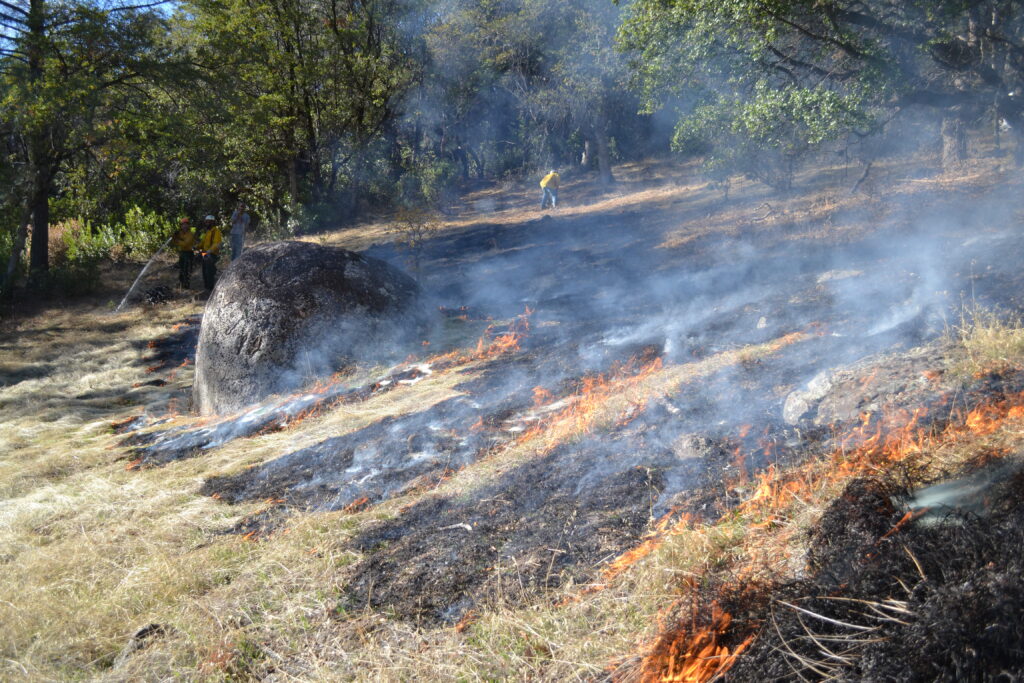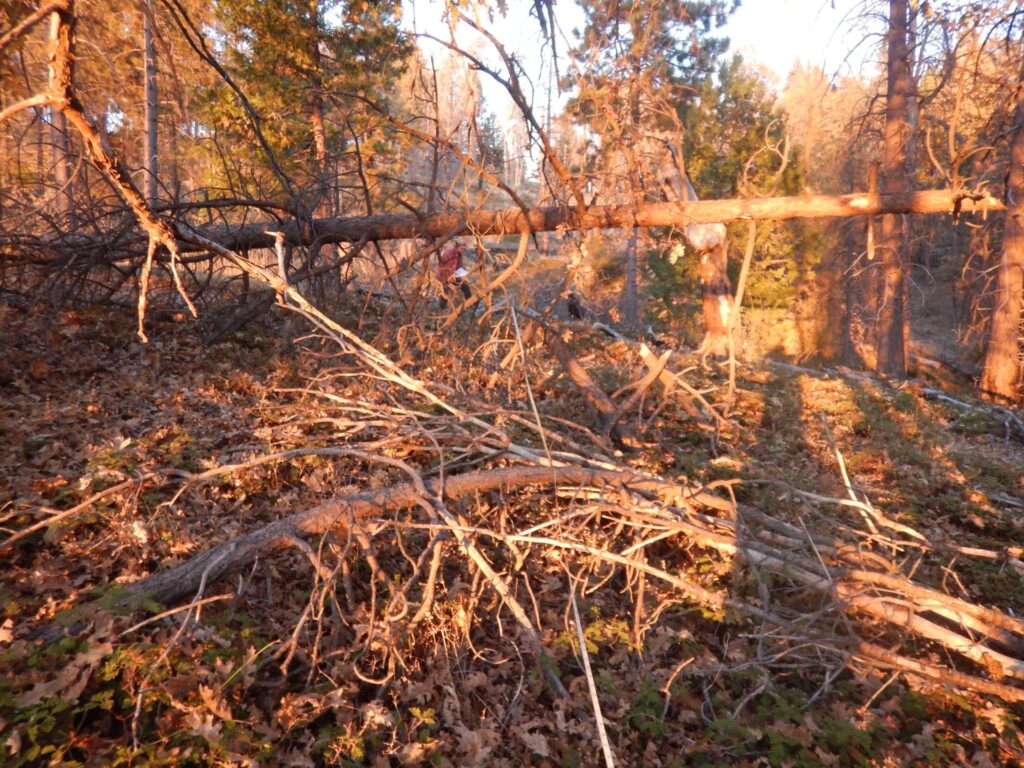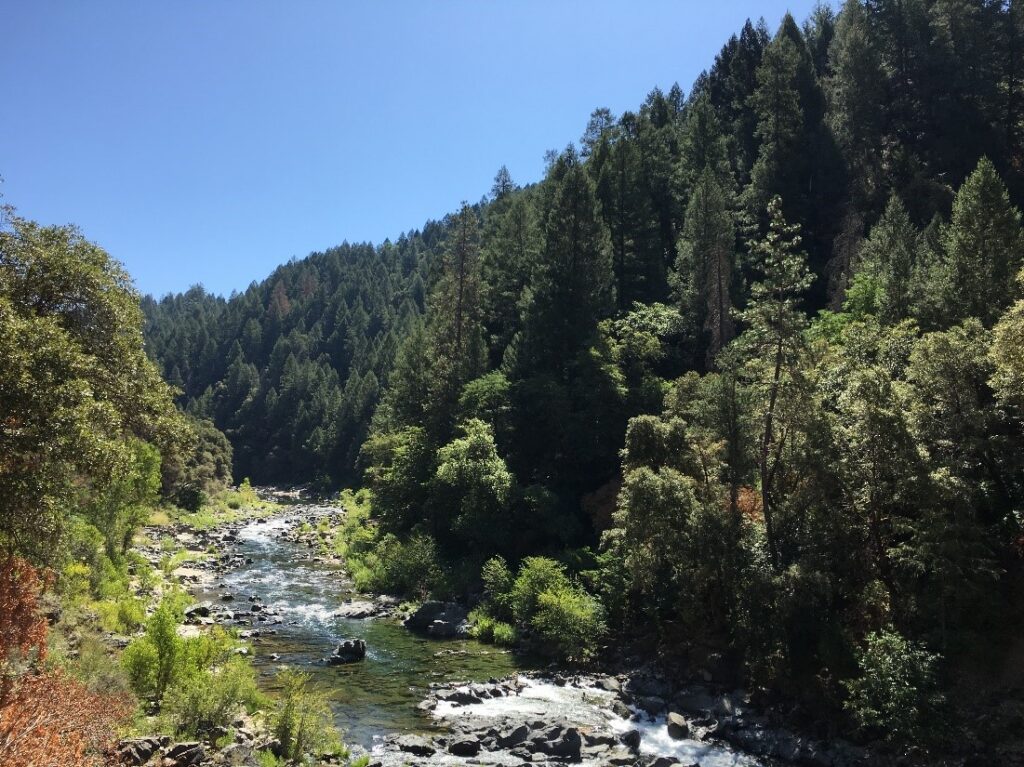Fire and Rivers in California
When forests burns, it also affects streams, rivers and communities far beyond the fire’s perimeter.
It’s barely mid-September, and I have already been evacuated from or told to be ready to leave two homes because of out-of-control wildfires.
In mid-August, I woke up on a Monday morning to reports of the Jones Fire near my house in the Sierra foothills town of Nevada City. By Monday afternoon, I had been ordered to evacuate and went to stay with my family in wine country. On Wednesday night, my family received an evacuation warning because the Walbridge Fire (part of the LNU Lightning Complex) was creeping closer to Healdsburg, a town that has been threatened by wildfire each of the last three years. Fortunately, we never had to evacuate, but the experience of two evacuation experiences in three days was jarring. Countless others have lost their homes or have had similar experiences to mine.
It now seems widely accepted that fire season in California means a state of emergency: fires everywhere you turn, extended power-outages and smoke so thick you cannot safely be outside.
While some fires can have devastating effects on ecosystems and communities, fire has occurred for millennia in California. California ecosystems evolved with fire and are thus resilient and even fire-adapted, and have a natural ability to recover. Before people started suppressing wildfire, many ecosystems in the Sierra Nevada experienced fires every 20 years, in part because Indigenous Peoples used controlled burns to augment available resources for knowledge, ceremony and subsistence.

In the 1930s and ‘40s, the United States began suppressing fires. Although policy has changed to reflect fire as an ecological process in California, the decades of fire suppression have resulted in a dangerous and unhealthy legacy of thick vegetation and excess fuel, leading to reduced resilience to wildfire, drought and pests. Coupled with climate change stressors, historic forest management has made California’s forests more vulnerable to the larger, more severe fires we see today.
Just like people and forests, rivers are significantly impacted by wildfire.
The health of a river ecosystem is inherently linked to the land through which it flows. So when the forest burns, it also affects streams, rivers and communities far beyond the fire’s perimeter.

in Sequoia National Forest | Photo by Luke Hunt
Fire’s detrimental impacts on rivers are mostly the result of the loss of vegetation in the watershed. When trees and shrubs burn, the riparian zone is exposed to direct sun, resulting in increased stream temperatures (as much as 40 degrees). This increase can last for more than a decade while the vegetation regrows. Why is this a problem? Warmer water holds less dissolved oxygen, critical for healthy aquatic ecosystems, and can shrink or fragment native fish habitat and change a stream’s species composition. Plus, without vegetation to intercept rainfall, bare ground is exposed to precipitation and runoff and fewer plants take up water and hold the soil in place with their roots. This results in increased erosion and transport of sediment and debris into streams — often long after the fire has been extinguished. Fine sediment increases the turbidity of the water, reduces suitable spawning habitat for fish, and can suffocate fish, eggs, and aquatic insects.
Wildfires threaten drinking water.
While the effects of wildfires are felt most acutely by those who are evacuated or lose their homes, countless others are threatened by risks to water quality and supply. Watersheds in the Sierra Nevada are the source of 60 percent of California’s fresh water and supply drinking water to over 23 million people. So wildfires that lead to contaminated mountain streams can have a particularly significant impact on communities downstream.

prescribed fire | Photo by Stephen Graydon
Following a fire, increased sediment can interfere with drinking water treatment, even temporarily shutting down treatment plants by clogging filters and intakes. Suspended sediment in the water hinders detection of viruses and bacteria and limits effective disinfection. The impacts of large wildfires on water quality extend far downstream of the burned area. During the 2013 Rim Fire in the Stanislaus National Forest, Governor Brown declared a state of emergency for the city of San Francisco due to the threat the fire posed to Hetch Hetchy reservoir, which supplies 85 percent of the city’s water.
Wildfire can also affect water supply and storage. Sediment that gets flushed downstream from a burned landscape during precipitation events collects in reservoirs and decreases the amount of water they can store. The influx of sediment and debris can also block reservoir spillways and damage hydropower equipment. Following the King Fire in 2014, an influx of sediment into three reservoirs forced Placer County Water Agency to shut down hydroelectric operations for weeks and cost millions of dollars to remediate. One of those reservoirs, Ralston Afterbay, has lost about half of its original storage capacity as a result of sediment from the King Fire.
Where we go from here.
While California takes steps to address forest fire management to reduce the risk of large, catastrophic wildfires, American Rivers is improving forest management and re-establishing fire on the landscape in California’s headwaters to protect clean water for people and nature. Thinning and prescribed fire can reduce forest density, reducing the risk of severe wildfire, while having little or no impact on stream ecosystems. Multiple studies have shown that low- and moderate-severity prescribed fires in montane ecosystems of the Western U.S. have negligible effects on water quality, physical habitat and aquatic organisms, while reducing the danger of catastrophic wildfires and improving wildlife habitat.
In partnership with Sequoia National Forest and Terra Fuego, American Rivers has used prescribed fire on 225 acres, with another 500 acres in planning, along the gateway to Sequoia National Park. We are also pursuing planning for fuels reduction and prescribed fire for 900 acres directly adjacent to the South Yuba River, which would protect adjacent foothills communities and safeguard water quality and supply for communities in the Central Valley. In order to scale up this work, we are also partnering with graduate students from UC Santa Barbara to develop a method to prioritize fuels reduction projects that most benefit rivers and water supply. This work will reduce wildfire risk, improve ecological values, bolster community resilience and protect California’s rivers and water supply.




1 response to “Fire and Rivers in California”
Very interesting article. I live on the other side of the Yuba River in Yuba county. If you are familiar with Rice’s Crossing road near Bridgeport, I live on the other end, in Oregon House. We have evacuated or sat out plenty of fires in 40 years including the 49er fire in ’88 that threatened to cross the Yuba River.
I’m very interested in your proposed control burn. Where is it to be set and how large an area? Is the South Yuba State Park involved? So much of Calif needs fire management. My next door neighbor evacuated from the school where she taught in Paradise just ahead of the Camp Fire. Maybe some day we can say “never again”